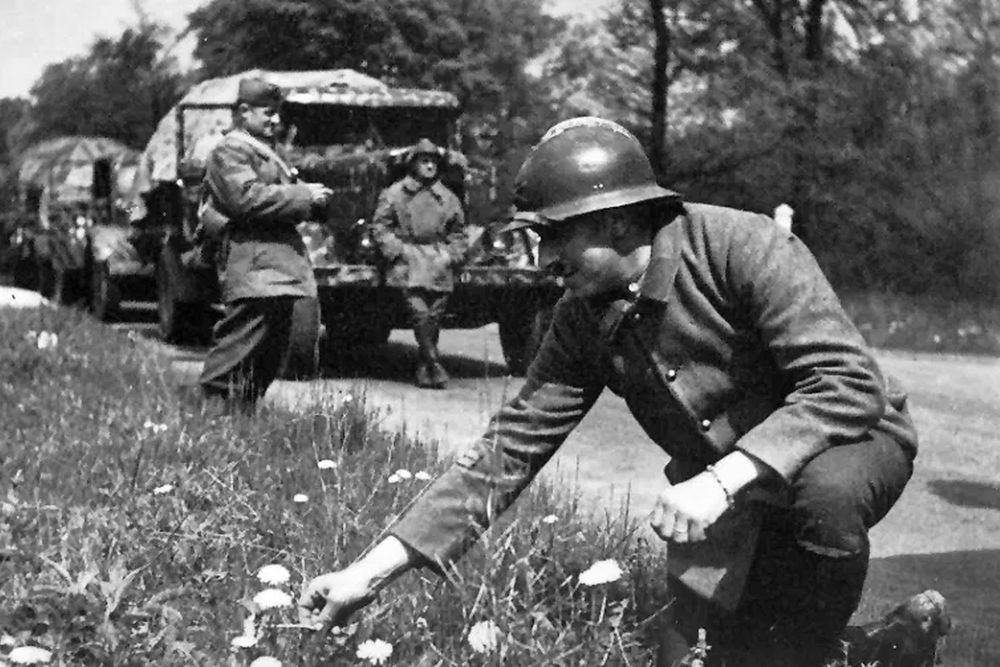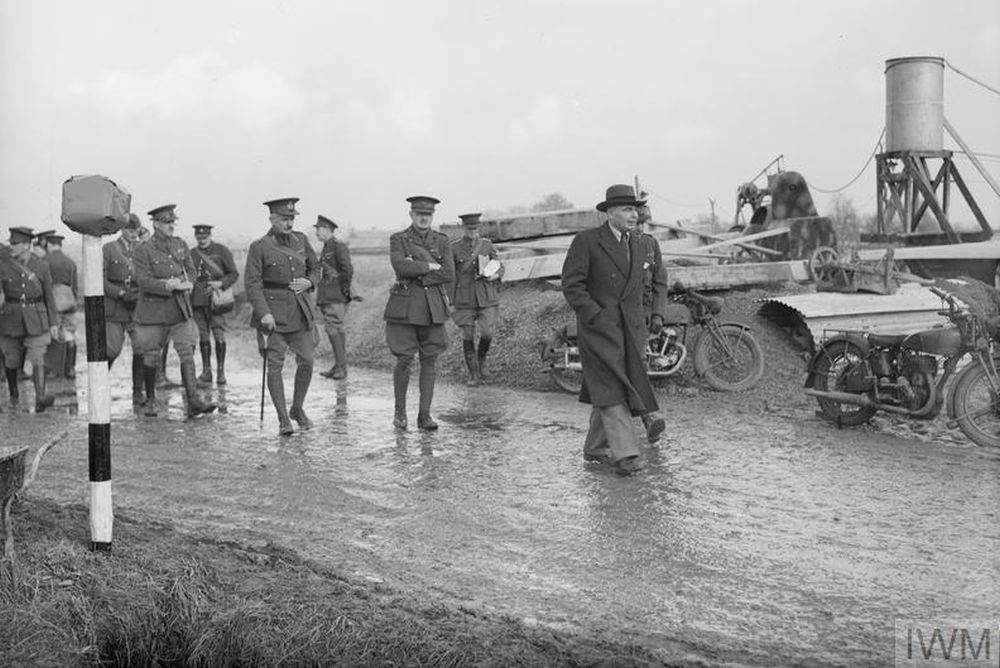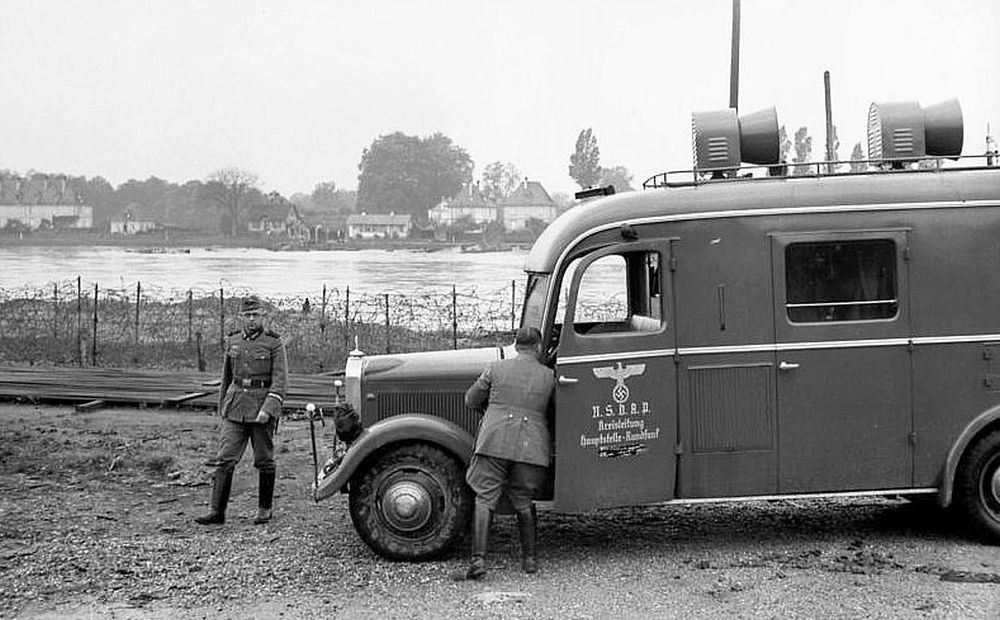Introduction
Response to Fall Weiss
There was heavy fighting at sea and in Poland, but a very different situation unfolded on the "future" western front. Except for a few air raids, the Allies stood by but did nothing. This reaction was typical of the attitude of the Allied army leadership and its commander-in-chief General Maurice Gamelin. This 76-year-old man had made up his mind to prevent any repetition of massacres like Verdun in World War I. Unwilling to risk losing his valuable troops in a battle at the first opportunity, he preferred to wait and see how the enemy would proceed. After all, France felt safe behind the mighty Maginot Line.
The only Allied response to the German invasion of Poland was them entering the Saar region during the Saar Offensive on September 7, 1939. The troops were supposed to establish an outpost line in this way. However, they were strictly ordered to retreat in the event of any hostility. There was no question of hostility, though: Germany had actually deployed all its troops in the Polish campaign. In fact, a concentrated Allied attack could have taken these troops deep into Germany without encountering any significant resistance. But nothing of the sort was attempted. Hitler had gambled on this and so he had made a wise guess. Because of the experiences with Austria and Czechoslovakia, Hitler was convinced that the Allies would not undertake a massive attack.
After the fall of Poland, this resulted in a strange situation, almost an unsigned truce. The French and some British units withdrew from the Saar region on October 4 without any fuss and settled behind the Maginot Line. The situation that arose on October 6, 1939, has come to be known as Phoney War, Drôle de Guerre or Sitzkrieg. Originally, the period was referred to by the British as the Bore War. Due to the confusing of tongues with the Boer Wars in South Africa, however, the American name Phony War was also widely used, which in British morphed into Phoney War.
Definitielijst
- invasion
- Armed incursion.
- Maginot Line
- French defence line along the French-German border.
- Offensive
- Attack on a smaller or larger scale.
- Phoney War
- Also known as “Sitzkrieg”. Name of the situation between 1939, the invasion of Poland and the invasion of the lower countries and France, a period during which no actual fighting took place.
- resistance
- Resistance against the enemy. Often also with armed resources.
Military build-up
Within 48 hours of the invasion of Poland, the British Expeditionary Forces (BEF) had crossed the English Channel. Under the command of General Lord Gort, they nestled among the French armies at pre-established positions. This BEF consisted of several officers whom we would often hear about in World War II. The 3rd Division was led by General-major Bernard Montgomery, the 2nd Army Corps by Lieutenant-General Alan Brooke and the 1st Division by General-major Harald Alexander.
The BEF was placed under the command of the French, but maintained the right to operate independently at all times. Meanwhile, the Allies were building their north-east front, a defensive line stretching from the English Channel to the Swiss border. This was all they undertook on the ground, however. The French felt invincible behind the notorious Maginot Line, and an attack via Belgium was considered unlikely given World War I experience. If Germany did attack from the north, it was thought there would still be enough time to move the front to the Dyle Line, that was secretly agreed with the Belgians.
However, this widespread idleness had a profoundly detrimental effect. The French soldiers, and to a slightly lesser extent the British, became extremely bored. As a result, morale collapsed completely, and public drunkenness became more the rule than the exception. The relentless German propaganda and the much lower pay the French soldiers received compared to the British, only contributed to the breakdown in morale. Even though the Polish government requested active support repeatedly, it was waved off. The Polish issue was not worth any French lives, as the government announced.
On the western front itself, an unrealistic situation developed, with friend and foe in some cases being very friendly. There were no gunfights for fear the other would fire back. In fact, along the entire western front, there were never even any bombing flights and only isolated bombing raids on Germany itself. Reconnaissance flights were conducted only sporadically. One thing that did happen a lot was the dropping of propaganda material, in which especially the Germans were the best, an issue that did not enhance the Allied troops' morale much. The Allies also dropped pamphlets over Germany, but the situation there prevented this from having any impact.
The only battles that were fought were mainly at sea and over England. On September 17, 1939, HMS Courageous (50) went down after being torpedoed by U 29 and on October 14, HMS Royal Oak (08) was torpedoed by U 47. From October 16, 1939, there were frequent German bombing raids on English and Scottish targets. In December 1939, the German cruiser Admiral Graf Spee (1933) was hunted down by the Royal Navy after which its own crew sunk her, and in February 1940, British commandos seized the m.s. Altmark (1937) in Norwegian waters.
On February 19, 1940, the Kriegsmarine launched Operation Wikinger to raid the British fishing fleet, an operation that failed miserably due to miscommunication between the Kriegsmarine and the Luftwaffe. However, along the German Siegfried Line things remained quiet.
Definitielijst
- cruiser
- A fast warship with 8,000 – 15,000 ton displacement, capable to perform multiple tasks such as reconnaissance, anti-aircraft defence and convoy protection.
- invasion
- Armed incursion.
- Kriegsmarine
- Germa navy. Part of the Wehrmacht next to Heer and Luftwaffe.
- Luftwaffe
- German air force.
- Maginot Line
- French defence line along the French-German border.
- propaganda
- Often misleading information used to gain support among supporters or to gain support. Often used to accomplish ideas and political goals.
- raid
- Fast military raid in enemy territory
Rising threat
Amid this idleness on the western front, all eyes were on the battle between Finland and the Soviet Union, which became known as the Winter War. The battle erupted on November 30, 1939. In the West, people automatically sympathized with the small Finland that fought to keep out the giant Soviet Union. It was the public opinion that demanded action from the British and French governments. The first political step became the exclusion of the Soviet Union from participation in the League of Nations, an organization that by then was already of no significant importance. Although a Franco-British intervention was being planned, it failed to pass. However, the plans for this intervention would later be used in the invasion of Norway during the German Operation Weserübung (April 1940). Once the Winter War ended on March 20, 1940, the French government's hesitation resulted in the resignation of Prime Minister Edouard Daladier. The whole matter did result in a Franco-British expedition to Norway in April 1940, which eventually ended in defeat. Daladier was succeeded by Paul Renaud.
After the Polish campaign, it dawned on the Allies that Germany was building up its troop presence in the west. There were increasingly strong indications that an attack was imminent. Beyond secret negotiations with Belgium and the Netherlands, however, not much else was done. The German attack on Scandinavia, Operation Weser (Weserübung), was a long-overdue wake-up call. Yet again, many interpreted this as showing that the western front would be drawn in the north, and this had to be because of the terrifying effect of the Maginot Line. When Germany launched the attack on the west on May 10, 1940, with Fall Gelb, the Allies were far from ready.Definitielijst
- invasion
- Armed incursion.
- League of Nations
- International league of Nations for cooperation and security (1920 – 1941). The League was located in Geneva, in neutral Switzerland. During the 1930s the league of nations could do little against aggressive behaviour of Japan, Manchuria, Italy, Abyssinia and Hitler. The league of nations was in fact the predecessor of the United Nations.
- Maginot Line
- French defence line along the French-German border.
- Soviet Union
- Soviet Russia, alternative name for the USSR.
Information
- Article by:
- Wilco Vermeer
- Article by:
- Sophie Louwers
- Published on:
- 19-08-2024
- Last edit on:
- 20-08-2024
- Feedback?
- Send it!










